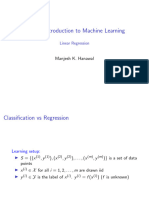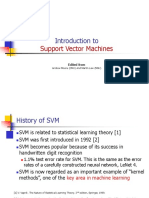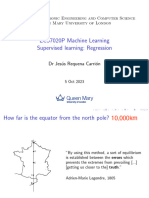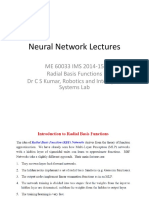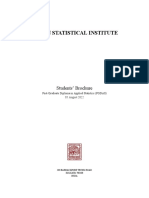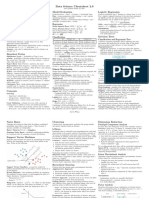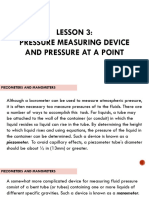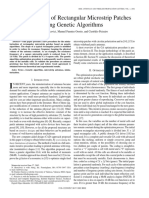0% found this document useful (0 votes)
27 views70 pagesClass Notes 02feb2023
- The document discusses linear and non-linear regression models for machine learning.
- For linear regression, the model predicts outputs based on linear combinations of input features.
- For non-linear regression, the model accounts for quadratic and higher-order polynomial relationships between inputs and outputs by adding derived features like squares and cross-terms to the input data.
- However, adding too many higher-order terms can lead to overfitting, so regularization is introduced to penalize complex models.
Uploaded by
arindamsinharayCopyright
© © All Rights Reserved
We take content rights seriously. If you suspect this is your content, claim it here.
Available Formats
Download as PDF, TXT or read online on Scribd
0% found this document useful (0 votes)
27 views70 pagesClass Notes 02feb2023
- The document discusses linear and non-linear regression models for machine learning.
- For linear regression, the model predicts outputs based on linear combinations of input features.
- For non-linear regression, the model accounts for quadratic and higher-order polynomial relationships between inputs and outputs by adding derived features like squares and cross-terms to the input data.
- However, adding too many higher-order terms can lead to overfitting, so regularization is introduced to penalize complex models.
Uploaded by
arindamsinharayCopyright
© © All Rights Reserved
We take content rights seriously. If you suspect this is your content, claim it here.
Available Formats
Download as PDF, TXT or read online on Scribd
/ 70



